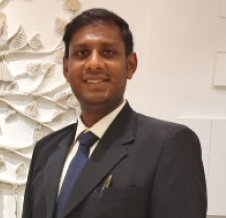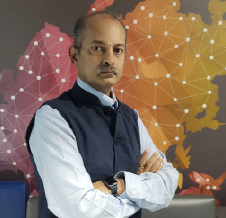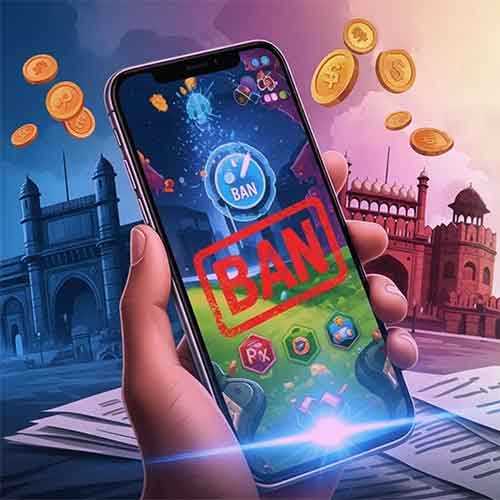Though the Indian telecom industry is grappling with the recent “2G & 3G” auction scam that came to light, the year 2011 carries lots of promises for the consumers. Today, mobile phone is a necessity rather than a luxury gadget. Everybody has a genuine reason to carry a phone. Mobile phone has posed threat not only to the fixed line phones but to Walkmans, Alarmclocks, organizers/ phone number diaries and the list continues if your phone is more than a basic (voice & SMS) phone. It is evolving as a converged, multi-purpose or all-in-one portable device. In an attempt, the Associate Editor (Print), VARIndia, tries to put together the past and the future of mobile phones in India.
Quick Recap

V Ramnath,
Director, Operator Channel, Nokia India
Ten years ago, if you look at the top ten players globally, there were five European players, two Japanese players and one American player. V. Ramnath, Director, Operator Channel, Nokia India, adds, “Exactly ten years later, there are two American players, one European which is only Nokia, no Japanese, the rest Chinese in the list. Also in India specifically, the second-, third- and fourth-largest mobile handset vendor position has changed hands every year for the last few years.”
According to the market feedback, Nokia and Samsung were the top picks for Indian consumers when it came to mobile phones throughout the calendar year, 2010. India is the fastest-growing market for mobile phones in the world. The year 2010 saw a sale of around 150 million handsets.

Ranjit Yadav,
Country Head - Mobiles & IT
Samsung India
"I think the reason why we have been able to grow and strengthen our position in the Indian market is because we have been able to continuously launch innovative new products in the Indian market. Not only for a specific market vertical, but, across different segments of the market. We are a full range player in the Indian market with product offerings across the Essential, Dual - Sim, Multi-media, TouchScreen and Smartphone segments," informs Ranjit Yadav, CountryHead - Mobiles & IT, Samsung India.
"We've over 50 models, belonging to entry-level to mid-range to high end including smartphones. The current market share of Samsung as of November 2010 is 22% by value and 20.3% by volume," he further added.

Arshit Pathak,
MD, Kingtech Electronics India Pvt. Ltd.
Globally, G'Five has been ranked as one of the top 10 mobile device brands by Gartner for the second quarter in 2010. “We are actively seeking more channel partners as India is a very big market and we want our brand to be omnipresent at every possible place where's there is a customer - right down to the rural and upcountry markets including tier II and tier III towns (category B & C class cities) besides metros,” said, Arshit Pathak, Managing Director, Kingtech Electronics India Private Limited.
Smartphone prices continued to drop throughout the year and as competition increased, with the launch of many advanced Android based devices at prices as low as Rs. 6,000/-. 3Q 2010 saw a strong quarter-on-quarter (3Q 2010 over 2Q 2010) growth in smartphone sales by 34.2% and a year-on-year (3Q 2010 over 3Q 2009) increase by 294.9%. This clearly underscores the trend that India mobile handset consumers have started showing higher preference for adopting smartphones. The next major highlight of the year was the coming of Android OS as a Smartphone platform, precisely in the 3Q.
In 2010, the Dual SIM phones had approximately 38-per cent share of the market. The Dual SIM market is registering 100-per cent growth year after year. With the advent of 3G, this number will soon reach more than 50 per cent in the next two-three years.
The year 2010 saw the entry of more than five new mobile phone brands in the Indian market. To name a few, Akai, Wynn Telecom, Sharp, iBall, XAGE and Byond are some of the new entrants. "The India mobile handset market got even more crowded and fragmented in the lower- and mid-market segments with the further entry of new players offering innovative models at attractive price points to lure buyers," stated Anirban Banerjee, Associate Vice-President - Research, IDC India.
Not only this, we saw many not-so-aggressive brands during the past one year also coming to the forefront like Motorola, LG and Fly, with quite decent and exciting launches.
Promising 2011

Shailendra Jha,
DGM-Telecom, Intex Technologies (I) Ltd.
Sharing some factual data, Shailendra Jha, Deputy General Manager - Telecom, Intex Technologies (I) Ltd., said, “The market has been growing steadily clocking an annual growth of 15-20 per cent. In 2008, the number of handsets sold in the market was around 110 million. This touched 130 million in 2009 and 150 million in 2010. This will, hopefully, grow to around 170-180 million in 2011.”
Android gained acceptance as a mobile operating system (OS) and 9.4 per cent of smartphones shipped in 3Q 2010 were based on the Android OS as compared to 2.9 per cent in 3Q 2009. This is expected to continue growing healthily. The next point of the talk is 3D technology that is increasingly being incorporated into every gadget available today, including mobile platforms. In India, Spice mobility had already launched a phone with 3D capabilities and in 2011, we can see a lot more experimentation in this area in the days to come.
Though new entrants like Sharp India considering themselves to be very young, find it not justified to comment specifically on the market growth, but their entry very well means that they see huge potential and want to replicate their global success stories. But they have nicely defined their targeted market verticals, which are youth in the age group of 25 to 45 years. “When it comes to geographies, we are focussing on North, North East, East, West and Andhra Pradesh. The other parts shall be covered within the next couple of months,” informed Kishlay Ray, General Manager - Marketing, Sharp Business Systems (India) Limited.
The new or already established players are all unanimously seeing huge growth in the rural India.
Features to look for
Ramnath opines that different market research firms peg the handset market size differently. “What is important to note is that India has grown to become the second- largest mobile market in the world after China and the growth momentum will only explode further in 2011 due to ample opportunities.”
He also shared the fact that with 3G making a debut in the country, consumers will experience accelerated network speeds resulting in an explosion in the services and data and entertainment options over the phone. “Also, we foresee a 300 million 3G handset replacement market opportunity with the services going live in the country,” added Ramnath.
Moving forward, in 2011, the market will be driven by the latest technology products. As the chipset technology and platforms are getting outdated and new companies / new chipsets / new platforms are emerging which have much better performance and much lower cost. A number of new chipset companies have introduced their products in the market in late 2010 like Spreadtrum, Infenion, MStar, and they will create their own share in 2011, besides the established ones like Mediatek (MTK) and Qualcomm.
According to G'Five some of the important trends in the Indian handset market have been the burgeoning growth of the handset market in India and issuing of 3G licenses.
Touch Screen phones, Dual SIM phones, ultra-long battery (40-80 days standby time) phones are catching up very fast in India. Recently, triple SIM, triple standby phones are also introduced in India. Android phones and smartphones are also capturing their market share. “In the Year 2011, we are looking at capturing over 30% of the smartphone market in India,” adds Yadav.
Brand endorsing
If we have Aamir Khan promoting Samsung, the couple Akshay Kumar and Twinkle Khanna talking about Micromax, followed by Saif Ali Khan and Bipasha Basu representing Wynncom, then does this mean sales? When the handset players were asked, they found this a chick-and-egg story.
“It is really an interesting question. Let me say this - the only brand endorsement has not resulted in sales of many brands in India. In order to kick off sales exponentially, one needs aggressive pricing and offers, strong channel/distribution network, followed by aggressive post-sales support,” adds Shripal Gandhi, Byond Mobile.
If a brand has all of the above, certainly it is a force to reckon with. And if this gets complemented by aggressive marketing (print, outdoor, electronic) with most adorable personalities, there is nothing good like it.
Another new entrant, Nawal Kumar Sawarthia, CEO, XAGE Communications India Pvt. Ltd., adds that branding does has a good impact because in India people tend to follow the celebrities/icons, though it is only limited to some section of the society or some parts, especially rural.”

Ajjay Agarwal,
Chairman and MD, MAXX Mobile
To this, Ajjay Agarwal, Chairman & MD, MAXX Mobile, added, “Brand endorsers help in creating a strong connect with consumers and conveying certain values of the brand. When the endorser clicks, it translates to a strong brand recall, eventually leading to sales.”
The Indian mobile industry has really evolved and is becoming mature. Handset buyers are not necessarily enticed by brands and their branding activities alone. In spite of some mixed opinions about brand endorsing by different players, we have players like Fly, who once used to bank upon the support of Bollywood actress Malaika Arora Khan, has no plans to revive the association.
Fierce Competition in 2011?
With the coming of many new brands in the market, will the industry face squeezing of margins?.
In a sense, it is right in saying that mushrooming of a new handset player means squeezing of margins. As there is a finite market and numerous brands are coming into the tier-II and tier-III market. But all agree that early entrants certainly do have a big advantage. “Squeezing of margins is seen in entry-level phones especially with 1.5” to 2.0” screen size phones with multimedia features as there are not very many differentiating factors besides ID of phones (look), battery size, speaker size (volume). That is why a brand is which is striving for constant innovation is a winner,” informs Gandhi.
But, at the same time, XAGE claims that some small-time players don't bother much about quality and after-sales, thus ending in buying low-quality material from China and creating the price war in the local market.
Not bothered by the mushrooming of the new players in the market, Samsung claims to continue with the momentum in 2011, which comprises of focus on strengthening their channel presence as well as enhancing their product line up across the different product segments.
The mobile handset market in India continues to be in transition with existing players disappearing and newer ones coming in. The mobile handset industry is unique in the sense that it is hyper innovation led with hyper failure thrown in. “This is an innovation- intensive industry. You have a chance every six months but a product alone is not enough and needs to be backed by several things like brand, support, reach and services. Players with all of these elements and the ability to form collaborative ecosystems will lead the market in the future,” comments Ramnath.
Road ahead...
The total telecom subscriber base (wireline and wireless) touched 723.28 million for the quarter ended September 2010 from 671.69 million in the quarter ended June 2010, an increase of 7.68 per cent, which means significant opportunities for mobile handset brands to enjoy, in the days to come.
2011 is all set to give the word 'convergence' the right personification. The introduction of 3G and unwrapping of its potential will lead to immense development in terms of the 5th virtual screen (the four screens being- mobile phone, TV, cinema and PC).
With 105 verious mobile phone companies of India and The Indian telecommunications industry is the world's fastest growing telecommunications industry, with 742.12 Million telephone (landlines and mobile) subscribers and 706.69 Million mobile phone connections as of Oct 31st 2010 .It is projected that India will have 1.159 billion mobile subscribers by 2013. Furthermore, projections by several leading global consultancies indicate that the total number of subscribers in India will exceed the total subscriber count in the China by 2013. The industry is expected to reach a size of 344,921 crore (US$74.85 billion) by 2012 at a growth rate of over 26 per cent, and generate employment opportunities for about 10 million people during the same period.
2011 will be all about exponentially greater services consumption and smartphones demand soaring driven by the launch of 3G. “Nokia is best positioned to address user needs with a wide range of 3G ready devices. We have also invested in building a strong Services portfolio and ecosystem partnerships across services whether it is infotainment or business productivity services for enterprises and SMBs or life enhancing services for rural and non urban consumers,” adds Ramnath.
In 2010, mobile handset industry has grown much more than it was speculated by established market research firms. In 2011, it will continue to grow up substantially because of expected increase in tele-density in India to 60% according to TRAI and increased Subscriber base to 600M+. Last but not the least, High turnover or changeover rate of mobile handsets from 3 yrs to 6-9 months, which is less than a year is an important growth driver. No wonder the life of the handset is much more than that but still who wants to continue using their same old handset, is a million dollar question.
See What’s Next in Tech With the Fast Forward Newsletter
Tweets From @varindiamag
Nothing to see here - yet
When they Tweet, their Tweets will show up here.





























